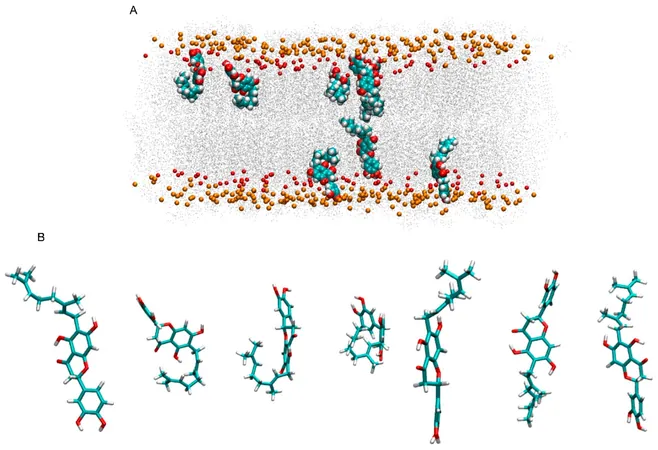
Unlocking Nature’s Secrets: How Nymphaeol A from Propolis Powers Up Cell Membranes!
2025-06-25
Author: Rajesh
Revolutionary Research Unveils the Dynamic Power of Nymphaeol A
A groundbreaking study led by Professor José Villalaín from the Miguel Hernández University of Elche (UMH) has unveiled the intriguing behaviors of nymphaeol A, a potent compound found in propolis, when it interacts with cell membranes. This work, featured on the June cover of the prestigious journal Membranes, showcases how this natural compound could be a game-changer in medical science.
The Propolis Connection: Nature's Hidden Treasure
Nymphaeol A is not just any ordinary compound; it is among the leading bioactive substances in propolis—a sticky resin created by honeybees that has been revered for its therapeutic properties since ancient times. Additionally, it's derived from the Macaranga tanarius tree, known for its medicinal usage in various Asian cultures. With its antioxidant, antimicrobial, and anticancer properties, nymphaeol A is emerging as a promising candidate for the development of innovative therapeutic agents.
Molecular Dynamics: Peering into Cellular Mysteries
Utilizing cutting-edge molecular dynamics simulations, Professor Villalaín meticulously examined how nymphaeol A operates within the complex architecture of biological membranes akin to those found in human cells. "My research enables a deeper comprehension of how nymphaeol A interacts within these membranes, shedding light on its therapeutic effectiveness," shares the celebrated researcher affiliated with the Institute of Research, Development, and Innovation in Health Biotechnology of Elche (IDiBE-UMH).
Key Findings: Flexibility Equals Biological Firepower
The study reveals that nymphaeol A seamlessly integrates into cell membranes, often adopting an extended conformation that boosts its interaction with membrane lipids. Although primarily acting as a monomer, it has the capacity to form small aggregates. This unique positioning among lipid chains leads to subtle alterations in the membrane structure, notably enhancing its fluidity—something essential for effective biological activity.
A Future of Possibilities
Professor Villalaín notes, "This flexibility and mobility within the membrane could help explain its robust biological activities." The results underscore the pivotal role of computational simulations in unraveling molecular interactions that traditional laboratory methods may struggle to reveal. This study not only pivots nymphaeol A into the spotlight but also opens doors to further exploration of other natural compounds with significant biomedical potential.

 Brasil (PT)
Brasil (PT)
 Canada (EN)
Canada (EN)
 Chile (ES)
Chile (ES)
 Česko (CS)
Česko (CS)
 대한민국 (KO)
대한민국 (KO)
 España (ES)
España (ES)
 France (FR)
France (FR)
 Hong Kong (EN)
Hong Kong (EN)
 Italia (IT)
Italia (IT)
 日本 (JA)
日本 (JA)
 Magyarország (HU)
Magyarország (HU)
 Norge (NO)
Norge (NO)
 Polska (PL)
Polska (PL)
 Schweiz (DE)
Schweiz (DE)
 Singapore (EN)
Singapore (EN)
 Sverige (SV)
Sverige (SV)
 Suomi (FI)
Suomi (FI)
 Türkiye (TR)
Türkiye (TR)
 الإمارات العربية المتحدة (AR)
الإمارات العربية المتحدة (AR)